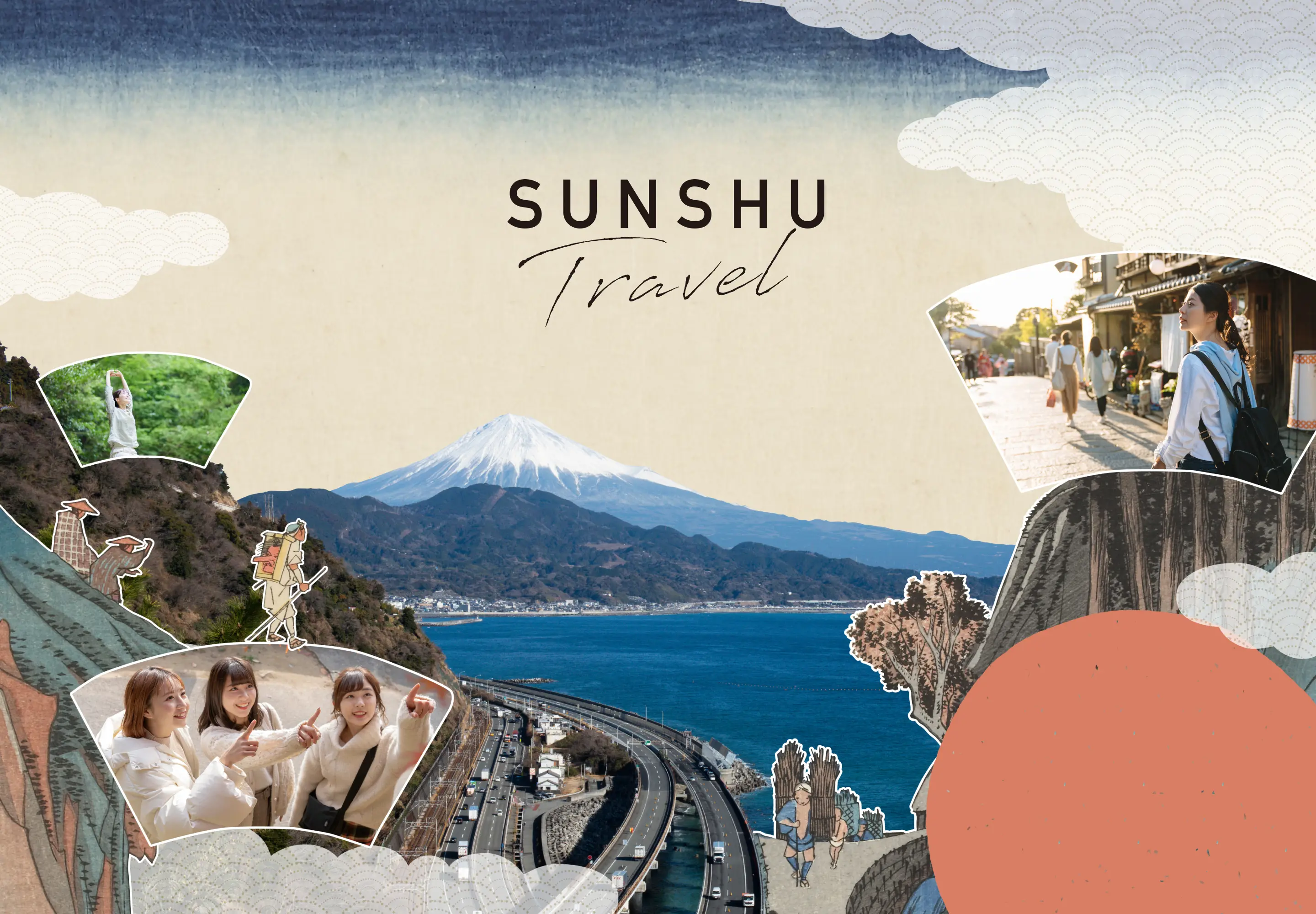Tokaidochu Hizakurige, a famous work of the Edo period,
known as the travel bible, has
as its protagonists Yaji and Kita, two men who were born in Shizuoka.
Tokaidochu Hizakurige became an instant bestseller when it was published in 1802. Its author, Jippensha Ikku, was born in Fuchu (modern day Ryogaecho, Shizuoka City). The protagonists Yaji and Kita were born in Fuchu (Aoi Ward, Shizuoka City) and Ejiri (Shimizu Ward, Shizuoka City) respectively. That is to say that the author and the characters he created were all from Shizuoka. The story begins with two characters meeting after Kita is fired from his job and Yaji loses his wife, and depicts their adventure from Edo to Ise and Osaka. The story also depicts famous places, historic sites, and specialty dishes they find along the way, making it a valuable record of travel in the Edo Period. In the story, Yajirobe (Yaji) and Kitahachi (Kita) are living in the tenements of Kanda Hatchobori, a castle town in Edo, when they meet and plan their journey. Their destinations are the Ise Grand Shrine, Yamato (Nara), the capital of flowers (Kyoto), and Naniwa (Osaka) where the plum blossoms bloom. With money earned from selling their household belongings, they depart Edo and head west along the Tokaido. The two men have many slapstick encounters and cause commotions along the way. Of course they cause commotions in Sunshu, but eventually reach Ise Grand Shrine, go sightseeing in Kyoto, and safely reach their final destination in Osaka.
The first travel boom in Japan, brought about by Yaji and Kita
You too can experience following them on their journey through Sunshu.
In Tokaidochu Hizakurige, Yaji and Kita have slapstick encounters on their way through Sunshu. Their comical story and Utagawa Hiroshige’s ukiyo-e series The Fifty-three Stations of the Tokaido attracted many people, causing a trend in travel to Ise during the Edo Period. In particular it is said that 2 to 3 million people from across Japan made their way to Ise Grand Shrine during the mass pilgrimage that occurred every 60 years. This was the first travel boom in Japan, started by Jippensha of Shizuoka and the two characters he created, Yaji and Kita. In the modern day there are many means of transport for enjoying travel, but in the Edo Period, there were no trains, cars, or even bicycles. Many obstacles lied in wait along the way for would be travelers. These obstacles included crossing the mountains at Hakone Pass, which is widely known from the song Hakone Hachiri, and crossing the “uncrossable” Oi River. Just imagining these difficulties now is in itself an act of asceticism. At the time, the Tokaido was a major artery connecting east and west Japan, like the modern day National Route 1. Travelers in the Edo Period enjoyed Sunshu on the way to Ise. They were certain to stop in Sunshu while on the way to Ise Grand Shrine. There are many vestiges from that time left in the area to this very day.







